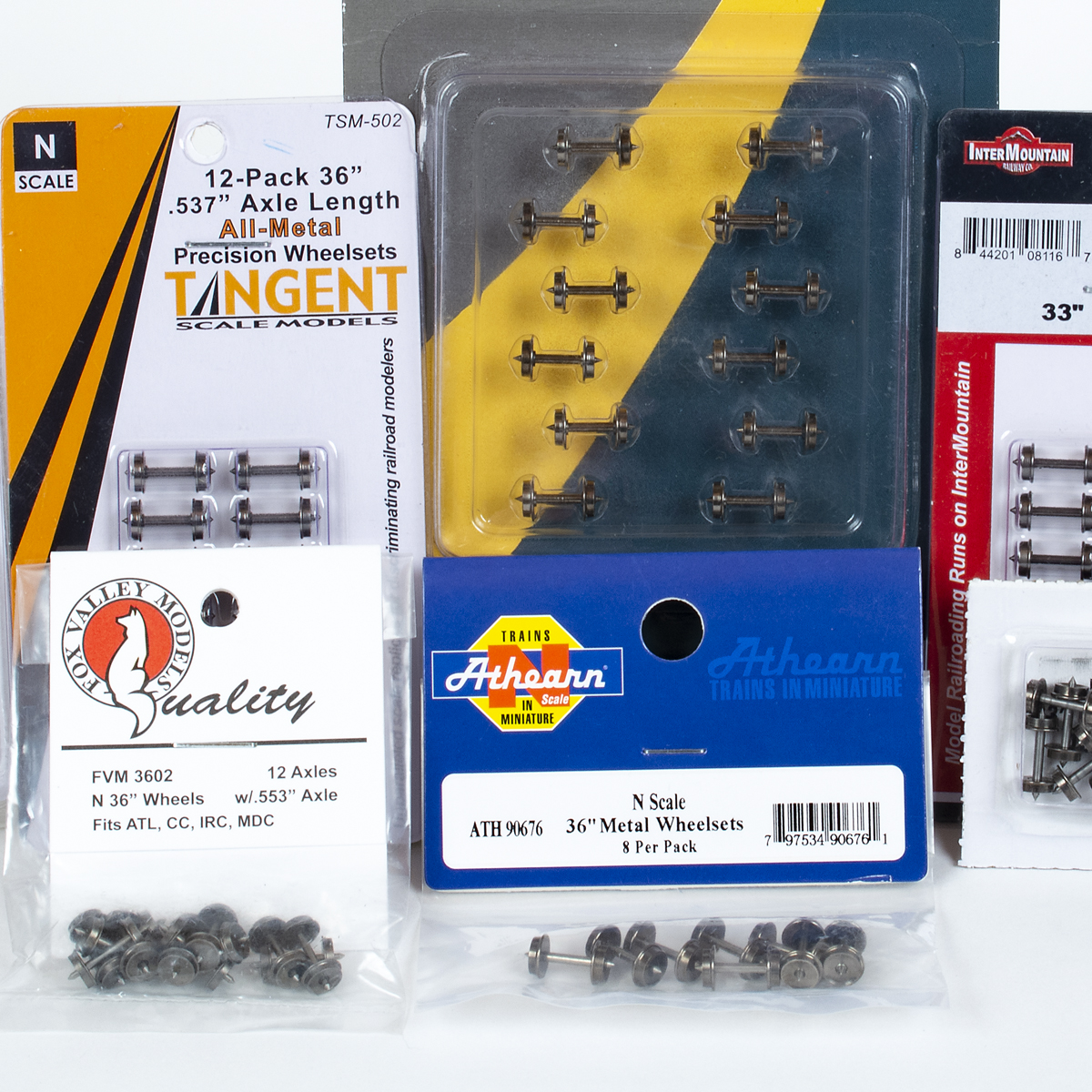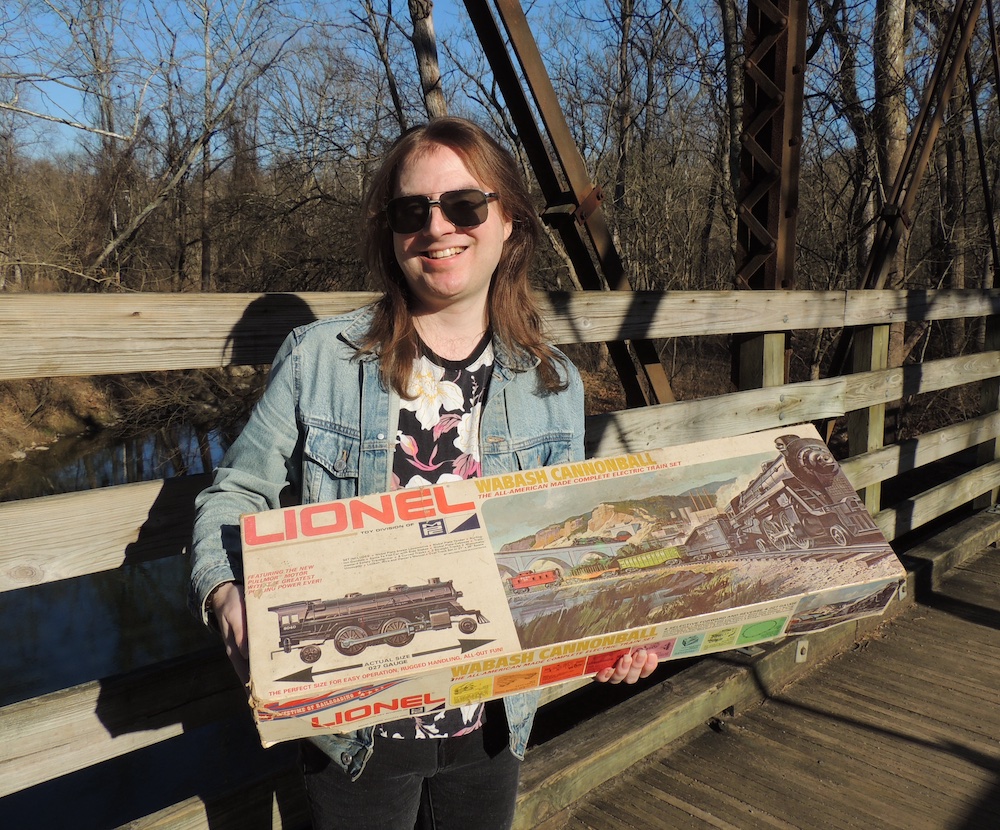Finding older Lionel and American Flyer cars in good shape at a bargain price can be a challenge, because over the years, collectors have scooped up many of the really clean pieces. That’s no reason to despair, though – many of those grimy $5 and $10 cars you find at shows and shops are actually pretty nice under their coats of dust, oil, and fingerprints. They just need a good cleaning, and then they’ll be ready for your layout, or maybe even a display shelf.
That’s where you come in. With a few simple tools, some common household cleaners, and a bit of effort, you can have them looking sharp again.
Picking your project
It’s a good idea to start with an inexpensive car. You can practice your technique on it, and if you make a serious mistake, you’re not out that much money. If you’re starting with a metal car, look for one that’s reasonably dent-free and doesn’t have heavy rust. If you’re starting with a plastic car, look for a car that isn’t missing any corners, doesn’t have any melted spots, and hasn’t been repainted. Also, avoid any car with flaking paint – anything you do to clean it will remove the flakes, and you’ll be left with a half-painted restoration project. Also avoid cars with glue or paint spatters, because those are too tough to remove.
If you’re lucky (and persistent), you’ll find a car with a decent body, good lettering, and an overall coat of filth. That makes for an ideal candidate, since the price will usually be low and your chances of success high. For postwar fans, unpainted plastic cars with heat-stamped lettering are the best candidates of all.
Getting started
The first step is to disassemble your candidate as much as possible. You’ll want to have standard and Phillips screwdrivers plus needle-nosed pliers handy. Remove any screws that hold the body on the frame. If it uses clips or tabs, try to bend them (carefully!) to separate the two. If any metal parts are rusted, a spray of penetrating oil (WD-40 or CRC 5-56) can help free them, though try not to get much on the body if the car is painted.
If you’re working on a postwar plastic car, it’s also a good idea to remove any metal door guides and brake wheels from the body. Try not to get them wet, since they weren’t painted at the factory. A little penetrating oil on the pins, followed by some gentle screwdriver work, usually frees them. Often you can push them out from inside the car. (Don’t worry if one bends or breaks – replacements are available. What you especially want to avoid is cracking or chipping the car body.)
Time for a bath
Whenever possible, clean your cars with dish detergent and water. The detergent will help lift the grime, so you don’t have to scrub much. Rubbing is tough on 30-to-50-year-old paint – it’s easy to scratch, or even rub through. Try starting with a mild dish soap (no need to buy one with added lotion), some warm water, and the softest 1″ paintbrush you have. Don’t use a toothbrush unless absolutely necessary – they’re too stiff. Test your soap and water in an area that isn’t visible (inside or underneath), then let your test patch dry and see whether the soap damaged the finish.
If your postwar car has rubber-stamped lettering (rub your hand over the lettering – if you can’t feel any indentations, it’s rubber-stamped), be extremely careful. Rubber-stamped lettering is very fragile and sometimes can disappear with only the mildest of cleanings. (It’s good idea to test on just a letter or two). Even if you feel an indentation (meaning the lettering was heat-stamped), you should still be careful not to scrub it too vigorously.
Give the car a thorough scrubbing, but remember to barely pass the brush over the lettering. Then rinse it with clear water and let it air-dry (no rubbing, remember?). Once it’s dry, take a look – is it clean, and is the finish even? If so, you’re done! Just put the car back together (you will clean the wheels, right?) and enjoy it.
Adding a bit of scrub
Sometimes the dish soap doesn’t work, especially if the car has a light-colored unpainted body. Soft Scrub cleanser (with bleach) usually helps on these cars, but remember to follow these three rules. 1) Put just a bit of cleanser on a wet brush, then paint the car gently and quickly. 2) Never, ever, scrub the letters – just pass the brush over them, once. 3) Rinse soon – about 20 seconds – after application. Otherwise even heat-stamped lettering will be gone. It’s easier if you work your way around the car, doing a side (or even a section) at a time.
If the Soft Scrub doesn’t help, you have a problem. Anything stronger will probably attack the paint (you can actually strip many Lionel cars using Tide laundry soap, and a cleanser like Simple Green or Castrol Super Clean removes paint like nobody’s business). In these cases, know that you’re pretty likely to damage the car’s original finish by proceeding.
Other dos and don’ts
Never clean a red-painted Lionel car. Never, ever. For some reason, the bright red paint the Lionel Corp. used is incredibly fragile. Dust them with a paintbrush, and then stop. Trust me.
Some hobbyists like to put a bit (or a lot!) of Pledge furniture polish on their cars after they’re clean. To my eye they look pretty odd, but to each his own. If you find a car that looks suspiciously shiny, it might be Pledge, or even Armor All. Stay away from them (the cars, not the hobbyists).
On the other hand, some hobbyists have good success applying a coat of Testor Model Master satin clear to freshly cleaned cars. This clear can even out any imperfections in the finish, and if applied according to the directions, it won’t hurt most plastics. (Here also, test in an inconspicuous area first).
Finally, don’t be afraid to give cleaning an older car a try. Who knows, that old junker you found at the bottom of the box just might become the prize of your collection.














What is the best way to clean and protect Aluminum cars with a silver finish
Here's a tip I received a couple of years ago, and it's great. Once you are finished cleaning, put on some Harold's Feed and Wax, let it sit for a couple of days, then rub out with a clean soft cloth. It gives the engine or car a really nice sheen, not real shiny, looks a lot like what vintage Lionel looks like if it's like new out of the box. You can find it in Home Depot, a bottle will last you a long time. I've done engines (like a 2046) and cars (like PRR caboose), and passenger cars (a set of vintage Madisons). Look great and seem to repel dust.
The softest brushes are makeup brushes. If you live close to a Dollar General Store, you can get them cheap. I found that you have to reshape them after using them with soap and water.
Thanks for the good advice. I have a few cars that have been in storage for years and don't want to hurt them.
This will help me learn patience and good planning.
Thanks for your help.
Steve
Great tips, glad I read them (especially about using something softer than a toothbrush, and not washing a red painted Lionel car)!
I've always used the tried and true Dawn dishwashing soap judiciously with great results. You can't use it on everything like the article said, particularly red items and some silver. Silver always gets a quick, careful cleaning swipe more than a wash.
I've always like the slight sheen a LITTLE Armor All (original) puts on Lionel postwar stuff, and even that sheen seems to tone down over time. I like the protective coating it provides, and 16 years later all the stuff still looks great with no evidence of ill effect. However, silver and red items just get a very careful, quick swipe with Armor All for all the reasons above. Just my two cents!